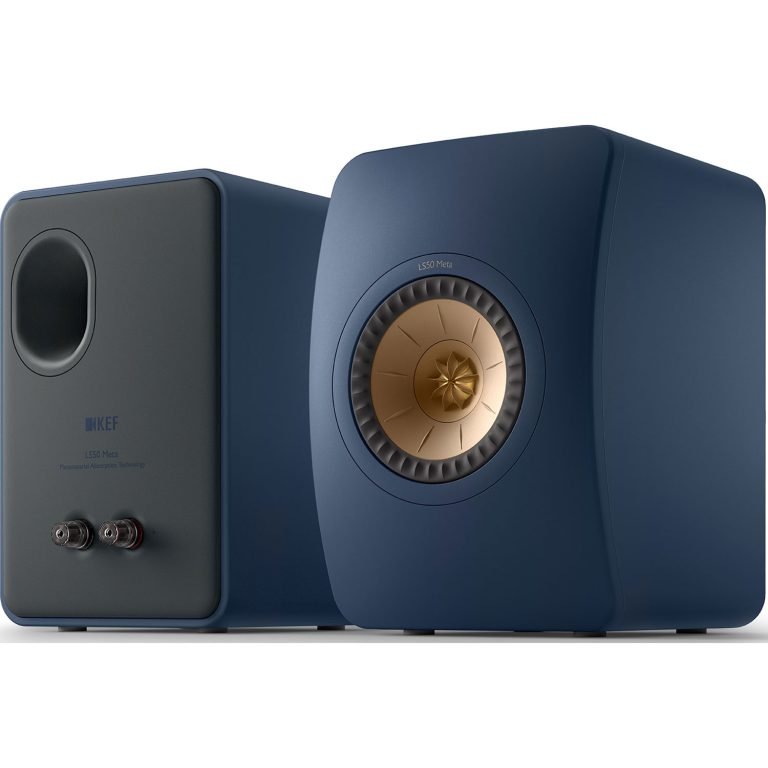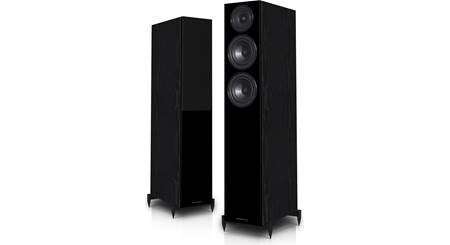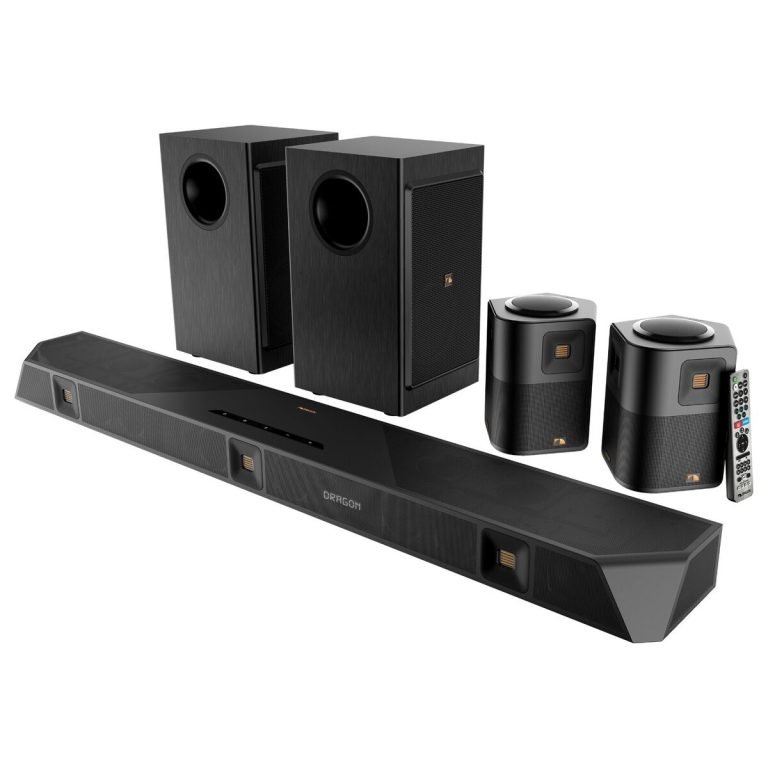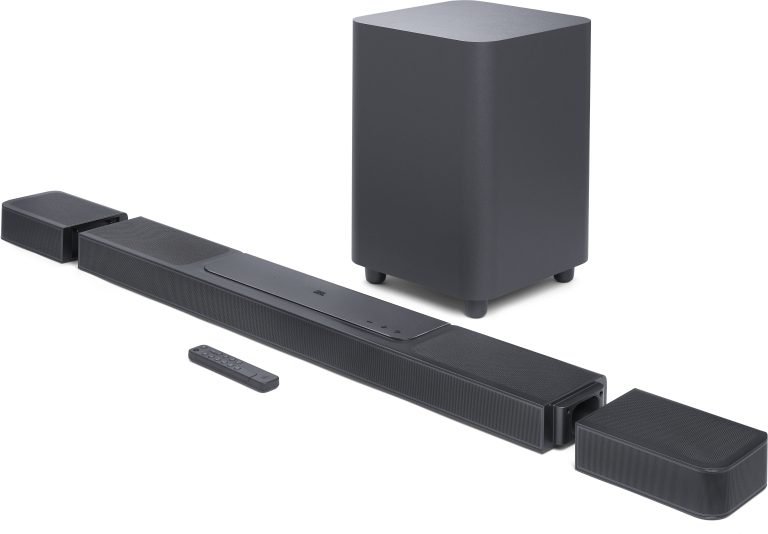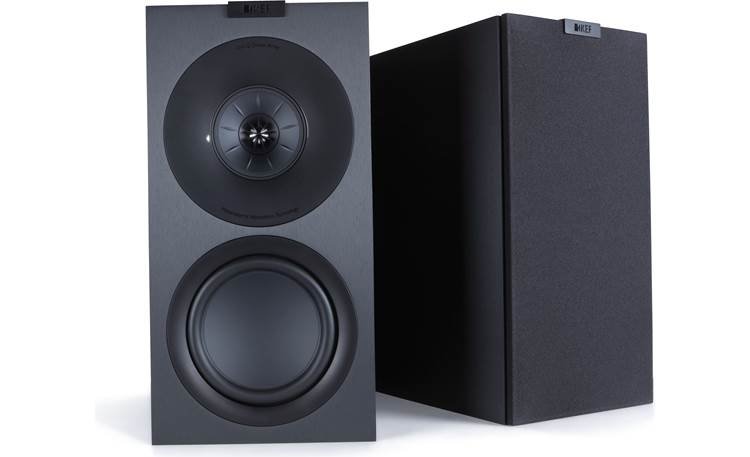Mission 750 Review: Unveiling the Ultimate Guide
Mission 750 Review
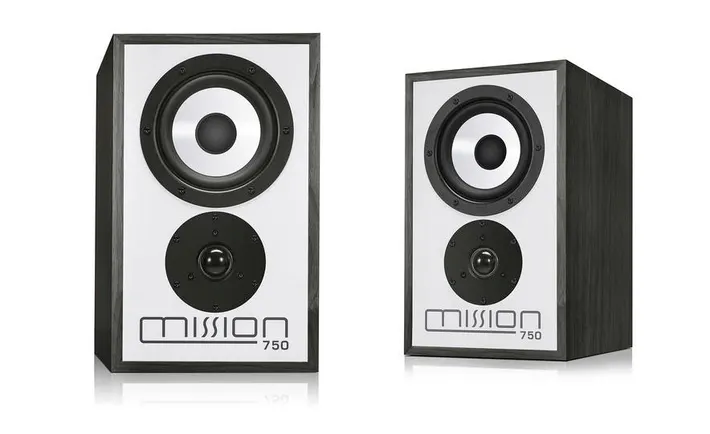
Contents
- 1 Introduction to Mission 750: An Overview
- 2 Key Features and Specifications of Mission 750
- 3 The Performance of Mission 750: What to Expect
- 4 User Experience: Navigating the Mission 750
- 5 Pros and Cons of Mission 750: A Balanced View
- 6 Mission 750 in the Market: Competitor Comparison
- 7 Conclusion: Is Mission 750 Worth the Investment?
Introduction to Mission 750: An Overview
Imagine stepping back in time with a touch of modern finesse—that’s exactly what the Mission 750 bookshelf speakers offer. These remarkable speakers bring together a retro-inspired design with state-of-the-art technology to deliver an auditory experience that’s both nostalgic and cutting-edge. With a compact design measuring just 35.5 x 21.6 x 27.0 cm, the Mission 750 is perfect for cozy spaces, yet bold enough to make a statement in any room.
Presented in two classic finishes—sleek black and elegant walnut—these speakers are built with a unique multi-layer construction featuring MDF and particle board, connected through a damping adhesive. This meticulous construction, coupled with internal bracing, ensures excellent resonance control, enhancing sound quality.
The Mission 750’s design goes beyond aesthetics. Its innovative Inverted Driver Geometry (IDG) positions the tweeter below the mid/bass unit, optimizing time alignment and stereo imaging for a superior listening experience. Perfect for audiophiles and casual listeners alike, these speakers manage to combine clarity with depth, making them a standout choice in today’s speaker market.
Join the Mission 750 journey and indulge in a sound adventure that’s as visually captivating as it is acoustically pleasing!
Key Features and Specifications of Mission 750
Let’s dive into the fascinating world of the Mission 750 bookshelf speakers, which skillfully blend retro-inspired design with cutting-edge audio technology!
Design and Construction
The Mission 750 speakers boast a charming retro aesthetic, capturing the elegance of bygone days while embedding a touch of modernity. Measuring a compact 35.5 x 21.6 x 27.0 cm (HxWxD), they are large enough to deliver robust sound yet small enough to fit comfortably in your living space. With finishes in both sleek black and rich walnut, these speakers can easily complement various interior styles.
More than just a pretty face, the construction of the Mission 750 is engineered for performance. Utilizing a multi-layer sandwich of MDF and particle board, secured by a layer of damping adhesive, the structure aims to keep vibrations at bay. Additions like internal bracing and foam lining ensure that resonances are controlled. In simple terms, you’re getting a speaker that minimizes distortion to deliver cleaner sound.
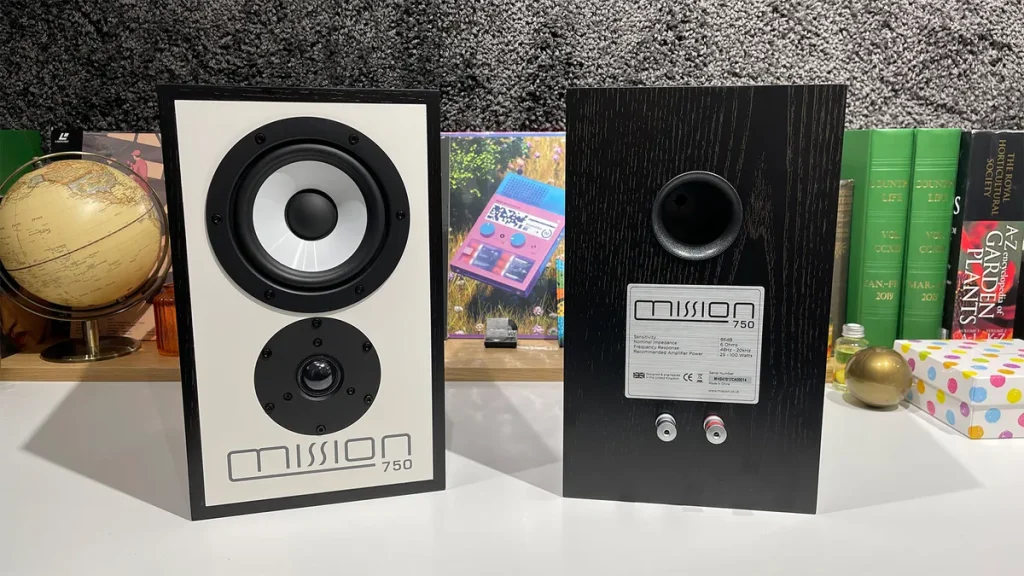
Driver Configuration
Now, let’s talk about the heart of these speakers—the driver configuration. Mission employs an Inverted Driver Geometry (IDG) in these units. By placing the tweeter below the mid/bass unit, this thoughtful design contributes significantly to enhancing stereo imaging and sound coherence. It’s like getting each note delivered with precision!
The mid/bass driver, measuring at 13.5cm (5.25 inches), uses a mineral-loaded polypropylene cone, perfect for creating a sturdy yet swift bass response. Meanwhile, the 28mm microfibre dome tweeter, with a damped rear chamber, deftly handles high-frequency sounds, ensuring extended bandwidth and reduced resonance.
Crossover and Frequency Response
The Mission 750’s crossover network might be one of its best-kept secrets. Set at 2.4kHz, it uses a high-quality design featuring components such as super-transparent polypropylene capacitors and air core inductors. This precision engineering allows for a smooth signal path and a fine-tuned frequency split. With a frequency response of 48Hz – 20kHz (+/-3dB) and a bass extension down to 42Hz, these speakers are tuned for clarity across a wide sonic spectrum.
Technical Specifications
Here are some numbers for the tech enthusiasts: nominal impedance stands at 6Ω (with compatibility for 8Ω setups), and sensitivity is rated at 86dB (2.83V @ 1m). These specs suggest that a good range for amplifier power would be 25W – 100W, allowing flexibility in pairing these speakers with diverse audio setups. Even at peak performance, they can hit a sound pressure level (SPL) of 103dB, while the minimum impedance drops to 4.5Ω.
Additional Features
Not to be overlooked, the rear-firing reflex port design assists in broadening the bass extension and avoiding the dreaded ‘one-note bass,’ ensuring each low note is distinct. Plus, one of their biggest wins is their compatibility—with no fuss about partnering equipment, these speakers fit effortlessly into various audio systems.
Truly blending the art and science of sound, the Mission 750 speakers offer an exciting ride through classic design combined with exceptional acoustic performance, proving they are more than just speakers—they’re a delightful auditory experience.
The Performance of Mission 750: What to Expect
When it comes to bookshelf speakers, the Mission 750 stands out for its blend of classic aesthetic and modern sound engineering. These speakers might be compact, but their performance commands attention with a sound quality that belies their size.
The first thing you’ll notice about the Mission 750 is its knack for delivering powerful bass. Despite their small stature, these speakers manage to pump out an authoritative bass that typically requires much larger drivers. The key lies in their 13.5cm mineral-loaded polypropylene cone, which is engineered for tightness and speed. This allows the Mission 750 to handle demanding bass-heavy tracks with surprising conviction, creating an immersive listening experience that holds up well even as the volume climbs.
Moving up the frequency range, you’ll find a clear and present midrange. The precision in this area ensures that vocals and instruments sit perfectly in the mix, providing a natural and rich listening experience. Whether it’s a mellow acoustic set or a complex orchestral arrangement, the Mission 750 maintains clarity and balance.
At the high-end, the 28mm lightweight microfibre dome tweeter comes into play, offering refined highs that avoid harshness. The tweeter’s damped rear chamber effectively manages resonance, extending the bandwidth and adding that sparkle without aggression. This means you can enjoy intricate details in your music, from delicate cymbal crashes to nuanced vocal inflections.
While the Mission 750 impresses across the board, it’s worth noting that they might not hit the ultra-high resolution or dynamic peaks found in some high-end competitors like the Bowers & Wilkins 606 S3 or the KEF LS50 Meta. However, for most audiophiles, the Mission 750’s performance is more than satisfactory, serving up a heap of detail while maintaining composure even during complex musical passages.
Another noteworthy aspect of the Mission 750’s performance is its ability to handle a varied catalog. Whether you’re playing a pristine new recording or your favorite rough-around-the-edges classic, these speakers manage to shine without showing the weaknesses sometimes highlighted by high-resolution systems. It’s like a loyal companion, ensuring your music always sounds good.
The crossover network, set at 2.4kHz and crafted from high-quality components, plays a significant role in this balanced performance. By minimizing the length of signal paths and utilizing components like super-transparent polypropylene capacitors, the Mission 750 achieves seamless frequency transitions, maintaining a sonic coherence that envelops the listener in a natural soundstage.
In summary, the Mission 750 delivers a sound performance that is both balanced and authoritative, particularly notable given its compact size. While there are certainly more advanced options out there, the Mission 750 presents an appealing choice for anyone seeking a versatile and reliable speaker that comfortably sits in diverse musical landscapes.
If you’re stepping into the world of high-quality bookshelf speakers, the Mission 750 offers an interesting journey. It’s almost as if these speakers invite you on a sonic adventure with their distinct blend of retro charm and modern technology. So, let’s delve into what it’s like to actually immerse yourself in the soundscape they create.
Design Delight
First impressions matter, and the Mission 750 doesn’t disappoint. Sporting a retro-inspired compact design, these speakers catch your eye with their attention to detail. With two elegant finishes available—classic black and sumptuous walnut—they can seamlessly fit into various decor styles. Their modest dimensions (measuring just 35.5 x 21.6 x 27.0 cm) make them a versatile choice for different room sizes, allowing for flexibility in placement without overwhelming your space.
The Sound Journey
What truly sets the Mission 750 apart is the listening journey it offers. With an Inverted Driver Geometry (IDG) configuration, these speakers bring a unique arrangement where the tweeter is found below the mid/bass unit. This setup ensures improved time alignment and stereo imaging, making each listening session a delightful experience. As you cue up your favorite playlist, prepare to be swept away by the speakers’ enthusiastic performance.
The heartbeat of the Mission 750 comes alive through its 13.5cm mineral-loaded polypropylene cone mid/bass driver. This hardy design allows for tighter bass tones, perfect for those who appreciate a rich bottom end. Meanwhile, the 28mm lightweight microfibre dome tweeter ensures high frequencies are reproduced with clarity and finesse, adding sparkle to your music.
Ease and Versatility
Using the Mission 750 is a notably unfussy experience. Whether you’re a seasoned audiophile or someone new to quality sound, these speakers accommodate both ends of the spectrum with ease. They’ve been designed to remain forgiving of partnering equipment, meaning you won’t need a high-end amp to enjoy their capabilities. It’s about enjoying the music without distractions.
Performance Resilience
The Mission 750 impresses in maintaining sound quality across a variety of recordings and genres. They have a knack for making even subpar recordings sound decent, ideal for those who enjoy a vast range of musical styles or podcasts. While they may not quite reach the crispness and dynamic range of some high-end competitors, like the Bowers & Wilkins 606 S3 or KEF LS50 Meta, they manage to carve out a niche with their warm, engaging sound and ability to stay composed, even at higher volumes.
Final Thoughts
The Mission 750 bookshelf speakers are more than just an audio tool; they are an experience. From elegant design and clever engineering to practical usability, these speakers promise to enhance your interaction with your music collection. Whether you’re revamping your audio setup or dipping your toes into the audiophile world, these speakers offer an engaging and accessible gateway, inviting you to explore the nuances of sound like never before.
Pros and Cons of Mission 750: A Balanced View
Let’s dive into the pros and cons of the Mission 750 bookshelf speakers. As we embark on this evaluation, let’s explore what makes these speakers tick and where they might leave you yearning for more. Whether you’re considering a new audio setup or just love a good tech chat, grab your cup of coffee, and let’s chat about the Mission 750.
Pros
Stylish Design: With a retro-inspired design available in both black and walnut finishes, the Mission 750 speakers strike a perfect blend of vintage charm and modern styling. Their compact build makes them a great fit for almost any room setup.
Inverted Driver Geometry: The unique inverted driver arrangement has a clear aim: to enhance stereo imaging and sound coherence. The tweeter sitting below the mid/bass driver might sound a bit quirky, but it’s this setup that contributes to their precise soundstage.
Balanced Sound: Known for their ability to deliver a clear midrange and refined highs, these speakers pack considerable punch given their modest size. Their performance in the bass department is particularly noteworthy, projecting authority and conviction even when handling demanding tracks.
Solid Construction: Built with a multi-layer sandwich of MDF and particle board, these speakers boast a robust construction. Internal bracing and a lining of foam and fibre help keep unwanted resonance at bay, ensuring a smooth auditory experience.
Versatile Use: Not fussy about the equipment you pair them with, the Mission 750s are versatile enough to fit into various setups, making them an attractive option for anyone looking to enhance their sound system effortlessly.
Cons
Sensitivity: With a sensitivity of 86dB, they aren’t the most efficient speakers on the market. They might require a little extra juice from your amplifier to reach those higher volumes comfortably.
Not for Power Seekers: If you thrive on heart-stopping dynamics and intense resolution, the Mission 750 might not completely satisfy your cravings. While they hold their fort well, they don’t quite reach the same expressive dynamics as some high-end rivals like the Bowers & Wilkins 606 S3.
Frequency Response: The frequency range from 48Hz to 20kHz is decent, but for those craving earth-shaking bass and crystal-clear highs, there might be a bit of room for improvement.
In conclusion, the Mission 750 speakers deliver a reliable and stylish performance suitable for a variety of settings. They’re not for everyone, particularly those seeking overwhelming power or ultra-high sensitivity. However, they offer an impressive sound quality that handles different types of recordings amicably. If aesthetics and versatility whip up your appetite for quality sound, these speakers might just hit the sweet spot in your audio journey.
Mission 750 in the Market: Competitor Comparison
Hey there, audio enthusiast! If you’re diving into the world of bookshelf speakers, you might have come across the Mission 750s and are curious about how they stack up against the competition. Well, sit back, relax, and let’s talk about where these speakers stand in the booming market of compact audio powerhouses.
The Mission 750 speakers are a nod to the past with their retro-inspired design, yet they’re packed with modern tech that keeps them highly competitive. When you compare them to big players like the Bowers & Wilkins 606 S3 or the KEF LS50 Meta, the Mission 750 holds its ground quite respectably, though it takes a slightly different path.
The Battle of the Designs
First things first, let’s talk about appearances. The Mission 750s might win some hearts with their compact and vintage charm. Available in black or walnut finishes, these speakers offer a style that’s both classic and contemporary, which could be a perfect fit for your listening room’s aesthetic. While the KEF and Bowers & Wilkins models can be sleeker with modern contours, style often boils down to personal preference.
Sound Quality Showdown
Let’s shift gears to sound quality, the heart of the matter. The Mission 750s have been praised for their balanced sound and deep bass, especially considering their size. They utilize an Inverted Driver Geometry to deliver improved stereo imaging, which might tickle your auditory senses if you’re into nuanced soundscapes.
However, if you’re someone who leans towards the ultimate resolution and dynamic expression, the Bowers & Wilkins 606 S3 or KEF LS50 Meta might take the lead in those categories. They offer slightly higher refinements in the mid and high frequencies. But don’t count the Mission 750 out—they maintain composure better than some might expect, even at high volumes, and they excel at delivering audio fidelity across a spectrum of recordings.
Market Dynamics
In terms of market positioning, the Mission 750s come at a competitive price point, offering a taste of high-quality sound without emptying your pockets. They might be particularly appealing to those who want a well-rounded sound without the premium pricing of top-tier competitors.
Versatility and Ease
One of the unsung advantages of the Mission 750 is their friendliness with a wide range of equipment. Their design ensures they aren’t too picky about their audio friends, which means you can integrate them into your existing setup without much fuss. That’s a bonus not every high-end speaker offers.
So, should you take the plunge with Mission 750? If you’re after a blend of vintage look, balanced sound, and versatility at a fair price, they are certainly worth your consideration. On the other hand, if you’re after the top-of-the-line accuracy in sound and don’t mind stretching your budget, you might explore the other heavyweights in this space.
In the end, it’s all about what resonates with you—quite literally! Happy listening!
Conclusion: Is Mission 750 Worth the Investment?
So, you’ve been diving into the world of the Mission 750 bookshelf speakers, and the big question looms: Are these speakers worth your hard-earned cash? Let’s break it down for you in layman’s terms, using all the goodies we’ve got.
From the get-go, the Mission 750 speakers really catch the eye with that nostalgic, compact vibe. They come in sexy black or walnut finishes, and their smart build—using a multi-layer sandwich of MDF and particle board—makes sure the design isn’t just about good looks. These guys are sturdy and cleverly damped to keep unwanted vibrations away. You’ll love how they’ve mixed the old-school charm with some serious modern tech in their construction.
Sound-wise, they’re no slouch either. The Inverted Driver Geometry (IDG) is a fancy term for their unique driver setup, which actually helps with stereo imaging and sound clarity. You’d be amazed at how these little things can handle a powerful bass line, keeping things crisp and clear. They might not shatter the earth with bass like some of their pricier friends, but their mids and highs are absolutely on point. They can get pretty loud—all while maintaining their cool—and they’re real champs when it comes to handling anything from poor recordings to pristine tracks.
One of the key highlights has to be their versatility. With a design that’s notably unfussy about the equipment you pair it with, you won’t have to jump through hoops to get them singing beautifully. They’re designed with a rear-firing reflex port, which is just a fancy way of saying that the bass is well-tuned and you won’t get that annoying boominess common in lesser speakers.
Looking over at the competition—think Bowers & Wilkins 606 S3 or KEF LS50 Meta—these players are no doubt in a different league technically. But, the Mission 750s hold their ground admirably, offering a well-rounded sound that’s delightful for a broad spectrum of music. Sure, they might not surpass some of their rivals when it comes to pure technical resolution or dynamic range, but the softness and warmth they add to your listening experience can be quite special.
In a nutshell, if you’re searching for speakers that blend tradition with modern flair, handle a wide variety of music, and do so without needing a total investment overhaul of your current setup, the Mission 750s might just be your new best friends. They bring a lot to the table for their size and price, and unless you’re looking to spend a small fortune to get that extra mile in performance, they’ll serve you well.
So, are they worth your investment? For music lovers looking for quality sound wrapped in an appealing and functional package, the answer is quite likely a resounding yes. Your ears—and your living room—may just thank you for the choice.

